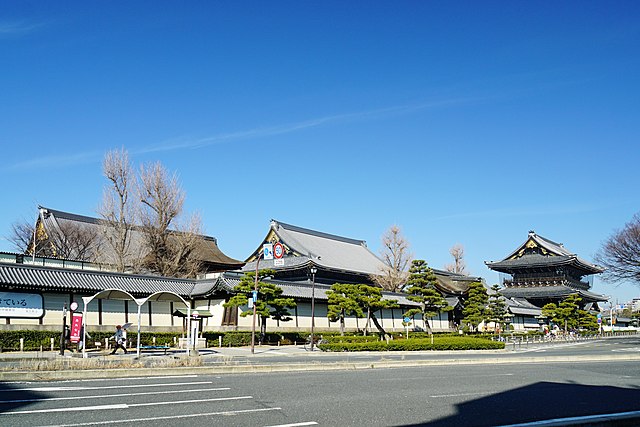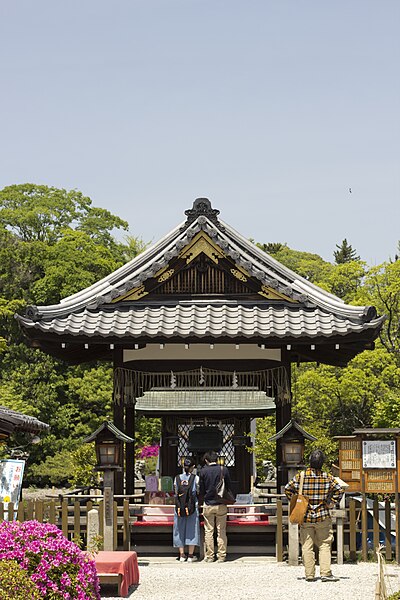Tokyō is a system of supporting blocks and brackets supporting the eaves of a Japanese building, usually part of a Buddhist temple or Shinto shrine. The use of tokyō is made necessary by the extent to which the eaves protrude, a functionally essential element of Japanese Buddhist architecture. The system also has an important decorative function. The system is a localized form of the Chinese Dougong that has evolved since its arrival into several original forms.
An example of mutesaki tokyō using six brackets
Diagram of bracket and cantilever arms from the building manual Yingzao Fashi (published in 1103) of the Song Dynasty
Tokyō components (block, bracket, kobushibana/kibana). Click to enlarge and display captions
Hitotesaki tokyō, rōmon, Honkaku-ji, Kamakura
Buddhist temples in Japan
Buddhist temples or monasteries are the most numerous, famous, and important religious buildings in Japan. The shogunates or leaders of Japan have made it a priority to update and rebuild Buddhist temples since the Momoyama period. The Japanese word for a Buddhist monastery is tera (寺), and the same kanji also has the pronunciation ji, so temple names frequently end in -dera or -ji. Another ending, -in (院), is normally used to refer to minor temples. Examples of temple names that have these suffixes are Kiyomizu-dera, Enryaku-ji and Kōtoku-in.
Higashi Hongan-ji in Kyoto
A torii at the entrance of Shitennō-ji, a Buddhist temple in Osaka
Honden of the Zennyo Ryūō shrine, inside a Shingon temple in Kyoto
A Buddhist-style gate (karamon) at Iwashimizu Hachiman-gū








